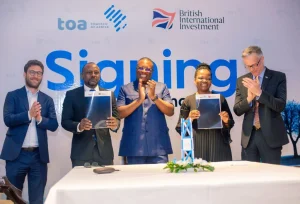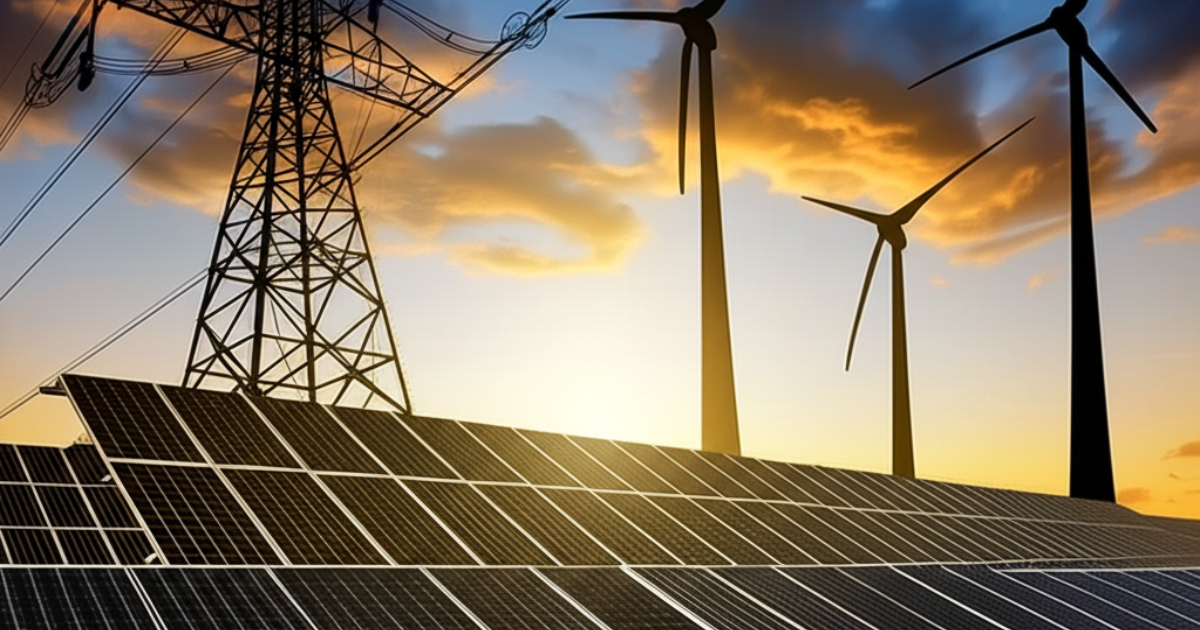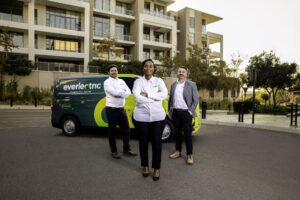Rural Inequality
The rural-urban divide is stark. While cities across Africa are gradually improving electricity reliability, most rural households remain entirely off-grid.
Rural electrification rates lag far behind urban access, and in some countries, fewer than one in five rural residents has reliable power.
This inequality drives migration to cities, overburdens urban infrastructure, and deepens social divides.
Between 2010 and 2020, Africa achieved some of the world’s fastest electrification growth.
Yet since 2020, the pace has not been enough to keep up with population growth.
For every 100 people gaining electricity, nearly 80 are being added to the population, erasing much of the progress.
At current trends, universal electricity access by 2030 (SDG7) is out of reach. Without bold interventions, hundreds of millions of Africans will still be left behind.
Country Snapshots
Nigeria: Despite being Africa’s largest economy and a major oil producer, Nigeria has the world’s largest electricity access gap. Millions of households and businesses depend on diesel or petrol generators, pushing up costs and emissions.
DRC: Blessed with vast hydropower potential on the Congo River, the DRC paradoxically remains one of the least electrified countries in the world. Rural access is below 20%, and unreliable infrastructure undermines growth.
Ethiopia: With ambitious electrification plans and large hydropower dams, Ethiopia has made progress, but more than 50 million people remain without power, underscoring the scale of the challenge.
The Reliability Challenge
For those connected to the grid, reliability remains a central obstacle.
South Africa has reduced blackouts compared to the rolling outages of 2022–23, yet load-shedding persisted into early 2025, undermining business confidence.
Nigeria’s grid remains fragile, with periodic nationwide collapses. Tariff reforms introduced in 2024–25—such as higher rates for “Band A” customers—have reduced subsidies by 35%, but affordability concerns remain acute.
Zambia and Zimbabwe experienced crippling power cuts after drought conditions depleted the Kariba Dam, exposing the climate vulnerability of hydro-dependent systems. While water allocations for 2025 have improved slightly, the crisis highlighted the urgent need for diversification.
Affordability Pressures
Across the continent, governments and regulators are adjusting tariffs to stabilize utilities and reduce fiscal strain.
Ghana implemented quarterly adjustments, Nigeria revised Band A rates again, and Kenya raised tariffs to account for forex volatility.
While these measures help ensure utilities remain solvent, they place additional burdens on households and small businesses already struggling with high living costs.
Investment and Finance: Momentum, But Still a Deficit
Africa’s clean-energy investment reached around $40 billion in 2024, an encouraging increase from previous years.
However, achieving the continent’s climate and energy goals requires more than $200 billion annually this decade.
The financing gap remains one of the biggest barriers.
High borrowing costs, perceived risk, and underdeveloped capital markets hinder large-scale renewable projects.
Development finance institutions have stepped up, but private investment still lags far behind potential.
Global and Regional Initiatives
To address the crisis, new initiatives are taking shape.
In 2024, the World Bank and African Development Bank launched “Mission 300”, an ambitious plan to connect 300 million Africans to electricity by 2030.
This initiative aims to mobilize $90 billion in financing and catalyze regulatory reforms that unlock private capital.
Meanwhile, mini-grids and stand-alone solar are emerging as the backbone of new connections.
Between 2020 and 2022, more than half of new electricity access in Sub-Saharan Africa came from off-grid systems.
These decentralized solutions are particularly vital for rural areas where grid extension is not economically viable.
Climate Pressures and the Risk of Inaction
Africa contributes less than 3% of global energy-related CO₂ emissions, yet faces some of the most severe climate impacts.
Hydropower-dependent countries are increasingly vulnerable to droughts, while fossil fuel–reliant states struggle to balance energy security with the clean-energy transition.
Without urgent action, the International Energy Agency warns that nearly 1.8 billion people will still lack access to clean cooking by 2030, with the majority in Africa.
Electricity access will also fall short of universal goals unless finance and policy support are scaled up dramatically.
The Bottom Line
Africa’s energy story in 2025 is one of incremental progress shadowed by enormous gaps.
Millions of new connections are being made each year, investment flows are rising, and bold initiatives like Mission 300 are gaining traction.
Yet energy poverty remains a defining challenge of development, constraining economic growth, undermining health outcomes, and exposing millions to climate-related risks.
The path forward demands:
Scaled-up financing—bridging the $160 billion annual gap through innovative blended finance and risk-sharing.
Policy reforms—tariff structures, regulatory certainty, and incentives for private investment.
Technology adoption—particularly off-grid solar, mini-grids, and clean cooking technologies.
Resilience building—diversifying energy mixes away from overdependence on hydro.
The stakes are high: without reliable, affordable, and clean energy, Africa cannot fully unlock its potential for industrialization, digital transformation, and inclusive growth.
The Energy Opportunity: Powering Africa’s Next Growth Chapter
Africa’s energy deficit is not just a development challenge—it is one of the largest untapped investment opportunities in the world today.
For investors, development finance institutions, and business leaders, the case for action is compelling.
1. A Market of 600 Million Potential Customers
With 600 million Africans still without electricity, the continent represents the largest growth market for energy solutions globally.
That’s 43% of Africa’s population, with concentrated demand in Nigeria, DRC, Ethiopia, and other fast-growing economies.
Every new connection creates not just a household consumer, but also an enabler of education, healthcare, and enterprise.
Urban households are demanding reliable grid power to replace expensive diesel generators.
Rural communities are increasingly adopting mini-grids and solar home systems, creating scalable off-grid markets.
Commercial and industrial sectors require clean, reliable power to remain competitive.
For investors, this translates to billions in addressable revenue potential across various customer segments.
2. The Fastest-Growing Energy Demand in the World
Africa’s energy demand is projected to grow at 4% annually between 2024 and 2026—the fastest of any region globally. Yet, per-capita consumption remains a fraction of emerging-market peers. This means two things:
Catch-up growth potential: As incomes rise, energy demand will surge.
Diversified opportunity: From grid-scale solar and wind farms to off-grid solutions, Africa’s markets are primed for expansion.
For comparison, the average African consumes less than 20% of the electricity used by the average citizen of emerging Asia. Closing that gap is a generational opportunity for investors.
3. Clean Energy as the Default Path
Unlike other regions, Africa has the unique chance to leapfrog directly into clean and distributed energy systems. Already:
Mini-grids and stand-alone solar provided over 50% of new electricity connections in Sub-Saharan Africa between 2020–2022.
Africa has some of the world’s best solar potential, with high irradiance levels across the Sahel, East Africa, and Southern Africa.
Wind, geothermal, and hydro resources remain underdeveloped, but ripe for investment.
This makes Africa the world’s most dynamic clean-energy frontier, where investors can align with both profit and impact.
4. A $200 Billion Annual Investment Need
Current clean-energy investment in Africa is estimated at $40 billion per year, but the continent requires over $200 billion annually this decade to meet its energy and climate goals.
This five-fold gap highlights both the urgency and the opportunity.
Development finance institutions are already signaling support—through the World Bank–AfDB “Mission 300” initiative (aiming to connect 300 million Africans by 2030) and blended finance mechanisms that de-risk private capital.
The next wave of investment will be shaped by:
Public-private partnerships to expand national grids.
Impact-driven venture capital funding decentralized solutions.
Corporate power purchase agreements (PPAs) for renewable energy in industrial hubs.
5. Catalytic Impact Across Sectors
Investing in African energy has multiplier effects:
Education: Reliable electricity boosts school performance by enabling evening study and digital tools.
Healthcare: Clinics can refrigerate vaccines and power critical equipment.
Agriculture: Cold chains reduce post-harvest losses, creating new value chains.
Digital economy: Data centers, fintech, and startups require uninterrupted power.
Every dollar invested in energy unlocks value across multiple sectors, multiplying impact and return potential.
6. The Strategic Imperative
For global businesses and financiers, Africa is not just an energy story—it is a strategic growth frontier.
By 2050, one in four people on the planet will be African. Energy access will define whether this demographic dividend translates into sustainable growth.
Prominent Investors in Africa’s Energy Sector (2025)
1. Development Finance Institutions (DFIs)
African Development Bank (AfDB) — A pivotal multilateral institution financing energy infrastructure with loans, equity, and technical support.
Africa Finance Corporation (AFC) — A pan-African institution with over US$11.5 billion invested in infrastructure, including numerous power projects across the continent.
British International Investment (BII) — The UK’s green finance arm, which deployed £1.3 billion in 2024 across Africa, Asia, and the Caribbean, with a strong emphasis on electricity access and clean energy.
2. Sovereign Wealth Funds & Strategic Investors
Senegal’s FONSIS — A sovereign wealth fund (approximately $1.23 billion in AUM as of July 2025), serving as both strategic and anchor investor for clean energy and other sectors.
UAE (United Arab Emirates) — A leading foreign investor in Africa with $72 billion earmarked for renewable energy projects between 2019–2023.
3. Private Equity & Venture Capital
Helios Investment Partners — A London- and Africa-based PE firm managing over $3 billion in commitments, investing across power, utilities, and broader infrastructure in Africa.
LeapFrog Investments — With $2+ billion raised and investments spanning climate solutions, this firm is a growing presence in energy- and impact-focused opportunities.
4. Corporate & Project-Level Investors
Eni — Committed to investing roughly €24 billion (~$26 B) across North African countries, including Algeria, Libya, and Egypt, over four years.
Azule Energy (BP & Eni JV) — Set to invest $5 billion in Angola over the next 4–5 years into oil and gas projects.
TotalEnergies — Awarded new deepwater oil and gas concessions in Nigeria and expanding LNG projects in Mozambique.
World Bank Support for Mozambique’s Hydropower — While not a direct investor, the World Bank provides critical risk guarantees and concessional support to projects like the $6 billion Mphanda Nkuwa dam. This underscores the enabling role of DFIs in scaling infrastructure.





